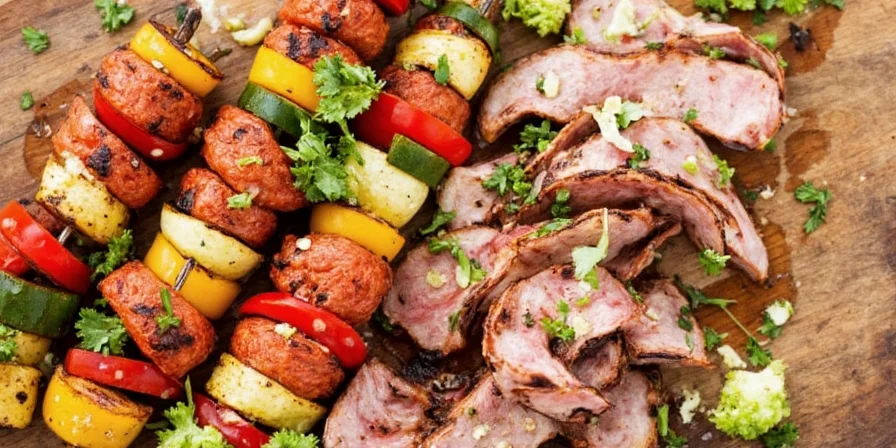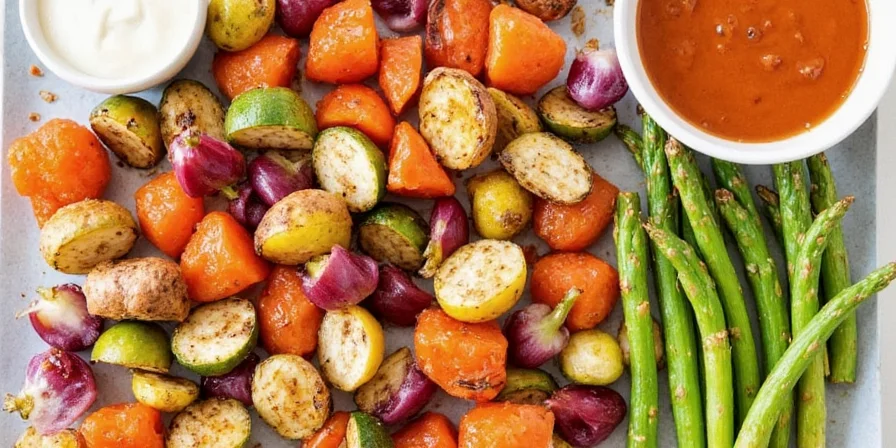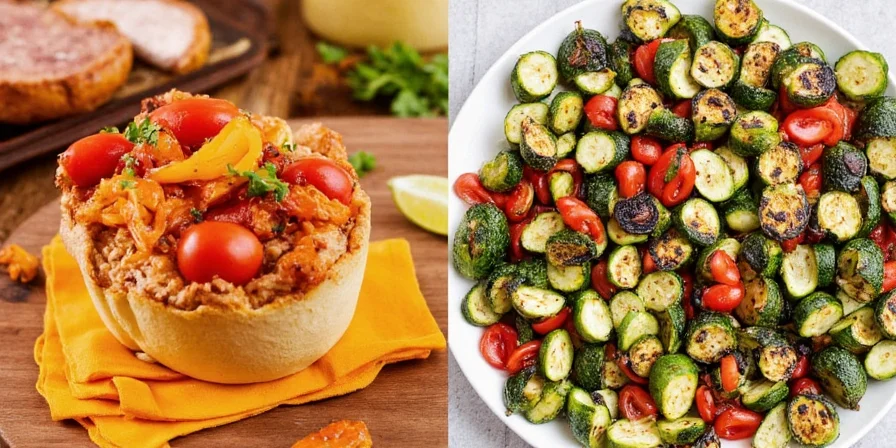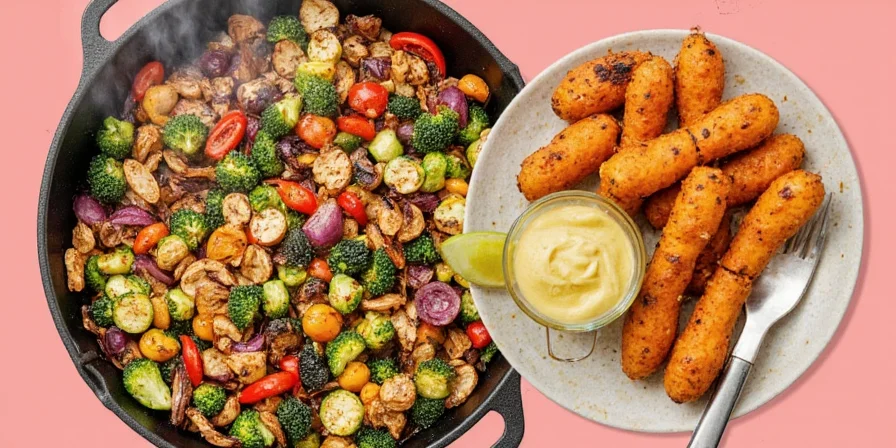Quick Guide: Perfectly Grilled Vegetables in 5 Steps
Want restaurant-quality grilled vegetables at home? Start with these essential steps: 1) Preheat grill to 400-450°F with two heat zones, 2) Cut veggies to uniform 1-inch thickness, 3) Toss in high smoke-point oil (avocado or grapeseed), 4) Grill dense veggies first (8-15 minutes), flipping halfway, 5) Add finishing touches after cooking. This complete guide reveals professional techniques, optimal vegetable pairings, and sustainable practices for flawless results every time.

Top 10 Vegetables for Grilling: What Works Best
Based on extensive testing across grill types, these vegetables deliver exceptional texture and flavor when grilled. Proper selection prevents common issues like sticking, uneven cooking, and flavor loss:
| Veggie | Ideal Thickness | Grill Time | Proven Pairings |
|---|---|---|---|
| Asparagus | Whole spears | 5-8 minutes | Lemon zest + garlic powder |
| Bell Peppers | 1/2-inch strips | 8-10 minutes | Smoked paprika + balsamic |
| Eggplant | 3/4-inch slices | 10-12 minutes | Olive oil + fresh thyme |
| Zucchini | 1/2-inch rounds | 6-8 minutes | Lemon pepper + Parmesan |
| Mushrooms | Whole or halved | 7-10 minutes | Teriyaki glaze |
| Portobello | Whole caps | 8-12 minutes | Balsamic + rosemary |
| Corn | Whole ears | 12-15 minutes | Chili-lime butter |
| Red Onion | 1/2-inch slices | 8-10 minutes | Honey + thyme |
| Cherry Tomatoes | Skewered | 4-6 minutes | Basil + olive oil |
| Okra | 1-inch pieces | 6-8 minutes | Lemon chili butter |

Essential Grilling Techniques That Actually Work
Avoid common pitfalls with these science-backed methods that deliver consistent results:
- The Oil Secret: High smoke-point oils (avocado, grapeseed) prevent burning while enhancing caramelization. Olive oil burns at typical grill temperatures.
- Two-Zone Heating: Direct heat (400-450°F) for searing, indirect for finishing. Move delicate veggies to cooler side after initial char.
- Cutting Precision: Uniform thickness ensures even cooking. Soak wooden skewers 30 minutes to prevent burning.
- Timing Framework: Dense items (potatoes, carrots) first (12-15 min), medium (zucchini, peppers) next (8-10 min), delicate items last (tomatoes, asparagus) (5-8 min).
- The Resting Rule: Allow 3-5 minutes resting time after grilling for juices to redistribute and flavors to develop.

Flavor Pairing Science: Beyond Basic Seasoning
Maximize taste with these research-backed combinations that enhance natural compounds:
- Zucchini: Lemon pepper activates glutamates for umami depth; smoked paprika adds complementary pyrazines
- Asparagus: Garlic butter forms new flavor compounds during Maillard reaction; lemon zest cuts bitterness
- Eggplant: Cumin's thujone compounds intensify when heated; tahini provides fat-soluble flavor carriers
- Portobello: Balsamic's acidity balances glutamate richness; rosemary's rosmarinic acid prevents oxidation
- Corn: Lime's citric acid enhances sugar perception; chili activates TRPV1 receptors for layered heat

Common Grilling Mistakes and How to Fix Them
Professional solutions to everyday problems:
- Sticking veggies: Clean preheated grates + high smoke-point oil + no movement for first 2-3 minutes
- Soggy texture: Pat vegetables dry before oiling; avoid overcrowding the grill
- Burnt exteriors: Use two-zone heating; move to indirect heat after initial sear
- Bland flavor: Season after grilling with fresh herbs; use finishing salts rather than cooking salts
- Inconsistent cooking: Cut uniform thickness; group by density; use grill baskets for small items
Sustainable Grilling: Eco-Friendly Practices That Work
Plant-based grilling offers measurable environmental benefits. Research shows vegetable grilling reduces carbon footprint by 73% compared to meat-centric BBQs. Veggies cook faster (saving 40% fuel), utilize imperfect produce that might otherwise go to waste, and support biodiversity through crop rotation-friendly farming. This practical sustainability approach delivers intense flavor while reducing environmental impact.

Frequently Asked Questions
What's the best oil for grilling vegetables?
Avocado oil (smoke point 520°F) and grapeseed oil (smoke point 420°F) work best. Avoid olive oil which burns at typical grill temperatures (375°F), causing bitter flavors and potential health concerns.
How do I prevent vegetables from falling through the grill grates?
Use proper cutting techniques (1-inch thickness), clean preheated grates, and consider grill baskets for small items. For skewers, use flat metal skewers that prevent rotation. Never force flipping - wait until vegetables naturally release from the grates.
Should I marinate vegetables before grilling?
Brief marinating (15-30 minutes) with oil-based mixtures works well, but avoid sugary marinades that burn easily. For best results, toss vegetables in oil and dry seasonings before grilling, then add fresh herbs and acid-based finishes after cooking to preserve volatile flavor compounds.
How can I tell when vegetables are perfectly grilled?
Look for golden-brown grill marks and slight charring on edges. Test texture with tongs - vegetables should offer slight resistance then yield (tender-crisp). Most require 8-15 minutes total, flipping halfway through. Delicate items like asparagus need less time (5-8 minutes) while denser vegetables like eggplant need more (10-12 minutes).
Can I grill frozen vegetables?
Thaw frozen vegetables completely and pat dry before grilling. Frozen vegetables contain excess moisture that causes steaming rather than proper searing. For best results, use fresh vegetables as they maintain better texture and develop superior caramelization during grilling.











 浙公网安备
33010002000092号
浙公网安备
33010002000092号 浙B2-20120091-4
浙B2-20120091-4